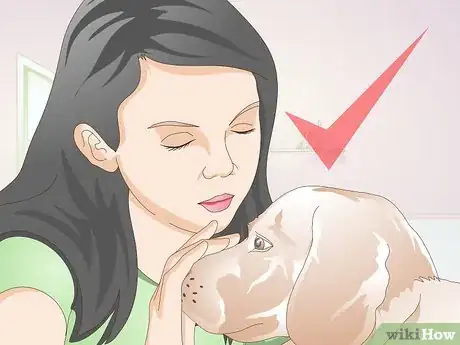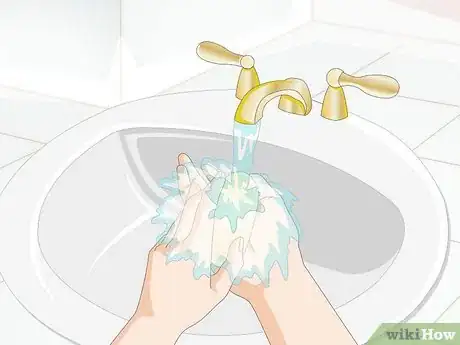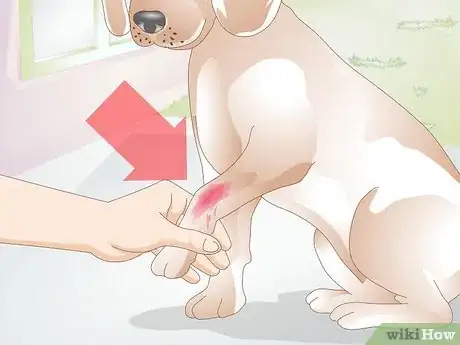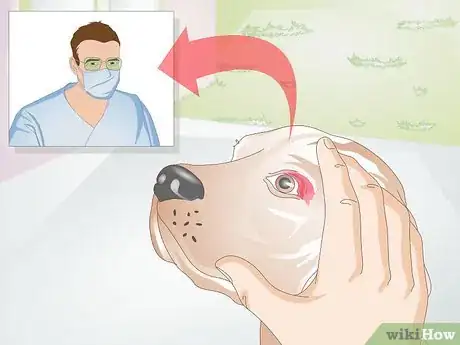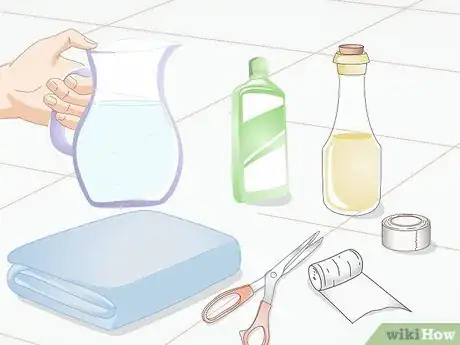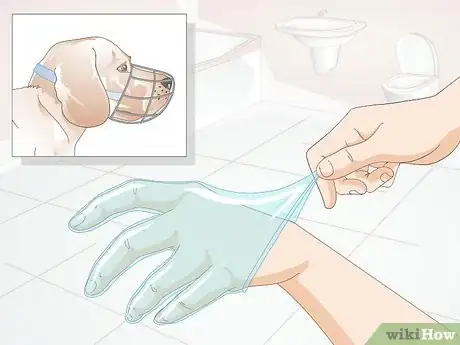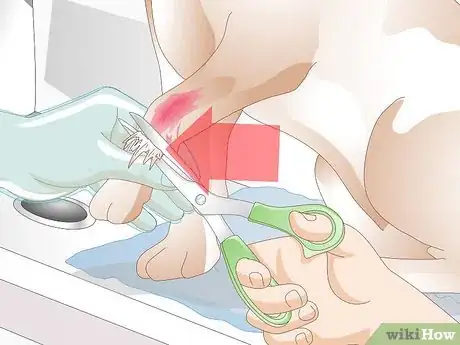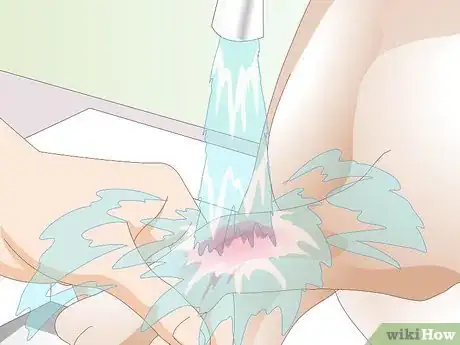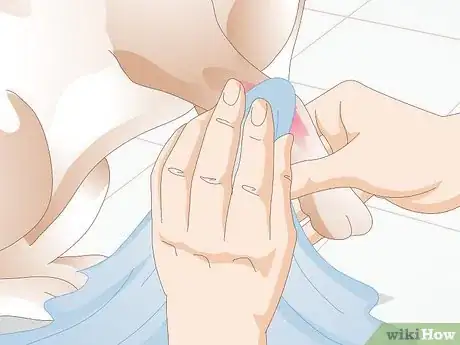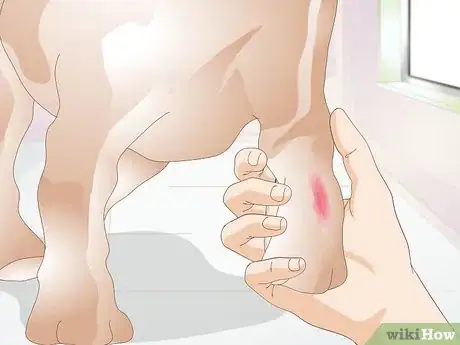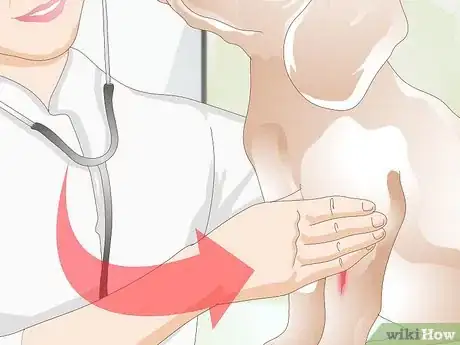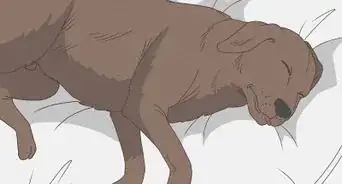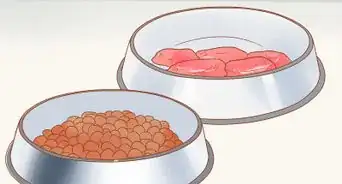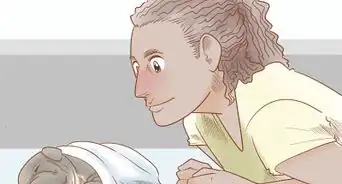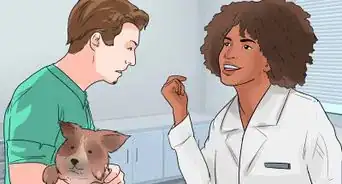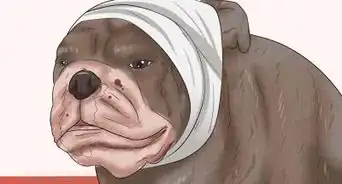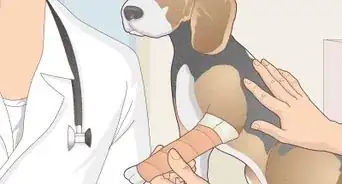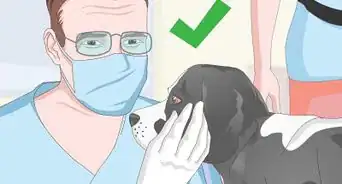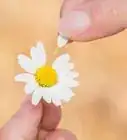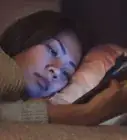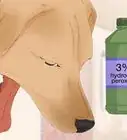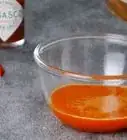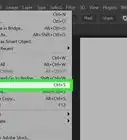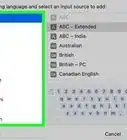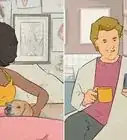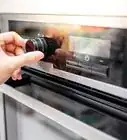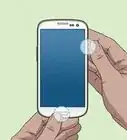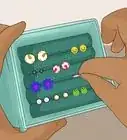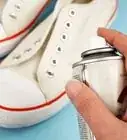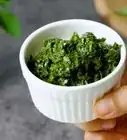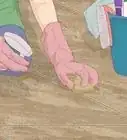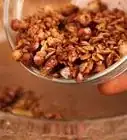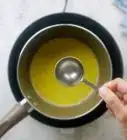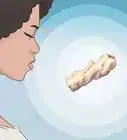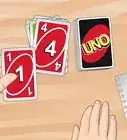This article was co-authored by Pippa Elliott, MRCVS. Dr. Elliott, BVMS, MRCVS is a veterinarian with over 30 years of experience in veterinary surgery and companion animal practice. She graduated from the University of Glasgow in 1987 with a degree in veterinary medicine and surgery. She has worked at the same animal clinic in her hometown for over 20 years.
This article has been viewed 21,654 times.
Most dogs will inevitably end up with a few wounds. Rough playing, biting, and running into things can all cause cuts or tears, also known as lacerations, that need some tender loving care. Not all lacerations are equal however. There are some that can be successfully treated at home while there are others that will need the attention of a veterinarian to heal properly without complications. The key is to sort out which wounds you can treat at home and which ones need a doctor’s care.
Steps
Assessing a Laceration
-
1Stay calm. Just like people, dogs can sense fear. If your dog becomes anxious or distressed, his blood pressure may rise and this can cause more blood to be expelled from a wound. Keep yourself and your pet calm.
-
2Protect yourself and your pet from infection. After making your dog calm and comfortable, you should take the proper precautions to prevent infection to either you or your pet. Start by washing your hands thoroughly and donning gloves when available. Once gloved and clean, you can look at the dog's wound.
- If your dog is bleeding profusely you may not have time to do this. Apply a pressure bandage to stem the flow of blood. Once the bleeding is under control and your dog is not in danger of bleeding out, get her to the vet immediately.
Advertisement -
3Decide whether the wound is immediately life threatening and needs emergency treatment. If there's excessive bleeding, or the cut looks very deep or long, you should get your dog to a vet immediately. To help slow the bleeding on the way, apply a clean towel or cloth to the wound and apply gentle pressure.
- If in doubt, take your dog to a veterinarian immediately. Blood loss is serious and can lead to illness or death. Don't risk your pet's life in order to avoid a veterinary bill.
- If possible, contact a friend to drive you and your dog to the vet. You can apply direct pressure to the wound using pressure applied to a clean gauze swab while your friend transports you. This is especially important if the vet isn't near by — your dog may bleed out if you don't slow the bleeding first.
-
4Assess whether the laceration needs veterinary treatment. Simple lacerations are those that don’t involve the full thickness of the skin, the deep tissues under the skin, and that don't involve an arterial blood supply.[1] While there is not a concrete consensus on classification of lacerations, if it was discovered less than six hours after the injury and it isn’t heavily contaminated, the laceration can be treated at home. Lacerations that need the attention of the veterinarian include:[2]
- Eyelid wounds.
- Most bite wounds.
- Footpad injuries deeper than just a superficial scraping of the pad.
- Lacerations that will not stop bleeding or that are spurting blood (indicating damage to an artery).
- Large lacerations.
- Deep penetrating wounds.
- Lacerations that involve muscle, tendons, or ligaments.
- Wounds that are heavily contaminated with mud, dirt, debris, manure.
- Painful lacerations: even if it looks like a simple laceration, sometimes there is damage underneath the skin that may need the attention of a veterinarian.
Treating a Simple Laceration at Home
-
1Gather supplies. You will need some medical supplies to treat your dog's wound. Items needed include:[3]
- Warm water: placing a small dog in a sink or a large dog in the bathtub works great for this, plus it makes cleanup easy.
- Scissors or clippers (do not use electric clippers around water though).
- Clean, dry towels.
- Antiseptic cleaner.
- Optional supplies: Triple antibiotic ointment, water-based lubricant (for protecting the wound from hair while clipping), and a muzzle (if your dog bites).
-
2Protect yourself. Put on gloves to protect your hands. Also, if you think your dog may bite you, put a muzzle on him.
- If you don’t own one, a simple one can be made by using a three foot length of gauze. Make a loop near the center. Place the loop over the muzzle and around the mouth. Tighten the loop and loop the two free ends behind the ears and tie in a snug bow tie.
-
3Remove the fur around the wound. Place the dog in the bathtub or sink without running any water. Use a towel or bath mat on the sink or bath bottom to provide secure footing if needed. You may want to have a second person hold your dog steady while you work at carefully clipping the hair away from the wound edges. Remove an inch of hair around the wound.
- You can place the lubricant in the wound prior to doing so to keep the hair out of the wound. It will wash away when you wash the wound.
- The hair is clipped away to allow the wound to be seen easily, to keep hair from covering the wound, and to help when you need to wash away any drainage.
-
4Clean the wound. After you are finished removing the surrounding fur, set the scissors or clippers aside and run the water until it is warm to the touch. Hot water or cold water will be painful, so avoid these temperature extremes. Run water over the wound for two to three minutes to remove any visible and invisible contaminants, and then gently wash with antiseptic for a minute. Too strong antiseptic can be damaging to tissue, so always following the directions on the label for the correct dilution
- Rinse again for two to three minutes and then turn the water off.
-
5Dry the wound. Blot the wound and surrounding skin dry. Be sure to use a clean towel, so that the wound does not get infected.
- Generally the wound will be left open to heal, as it is hard to get bandages to adhere to the dog’s skin and they tend to chew them off.
- You can place a thin layer of the antibiotic ointment on the wound, but dogs are likely to lick this off unless you keep a constant careful eye on them.
-
6Monitor the laceration. With timely and proper wound care most simple lacerations will heal just fine. Look at the wound every couple of hours the first day, and then check it four to five times a day for the next couple of days. Look for any sign of infection, which include:[4]
- Redness to the surrounding skin.
- Failure to heal.
- Swelling or puffy appearance to skin and wound.
- Drainage beyond day one.
- Pain.
-
7Seek veterinary help, if needed. If in doubt, please seek veterinary help. Your pet may require antibiotics for any infection, or possibly stitches to close the wound.
Warnings
- Do not attempt to sew a wound, suture a wound, or superglue a wound closed at home. You can injure your dog (and yourself if he bites you because of the pain), cause an infection, or cause further damage to the wound.⧼thumbs_response⧽
References
- ↑ http://www.merckvetmanual.com/pethealth/special_subjects/emergencies/wound_management.html
- ↑ Textbook of Small Animal Surgery, Volume 1. Douglas H. Slatter. Elsevier Health Sciences, 2003
- ↑ http://www.petmd.com/blogs/fullyvetted/2013/april/how-to-take-care-of-your-pets-minor-wounds-30187
- ↑ Textbook of Small Animal Surgery, Volume 1. Douglas H. Slatter. Elsevier Health Sciences, 2003
